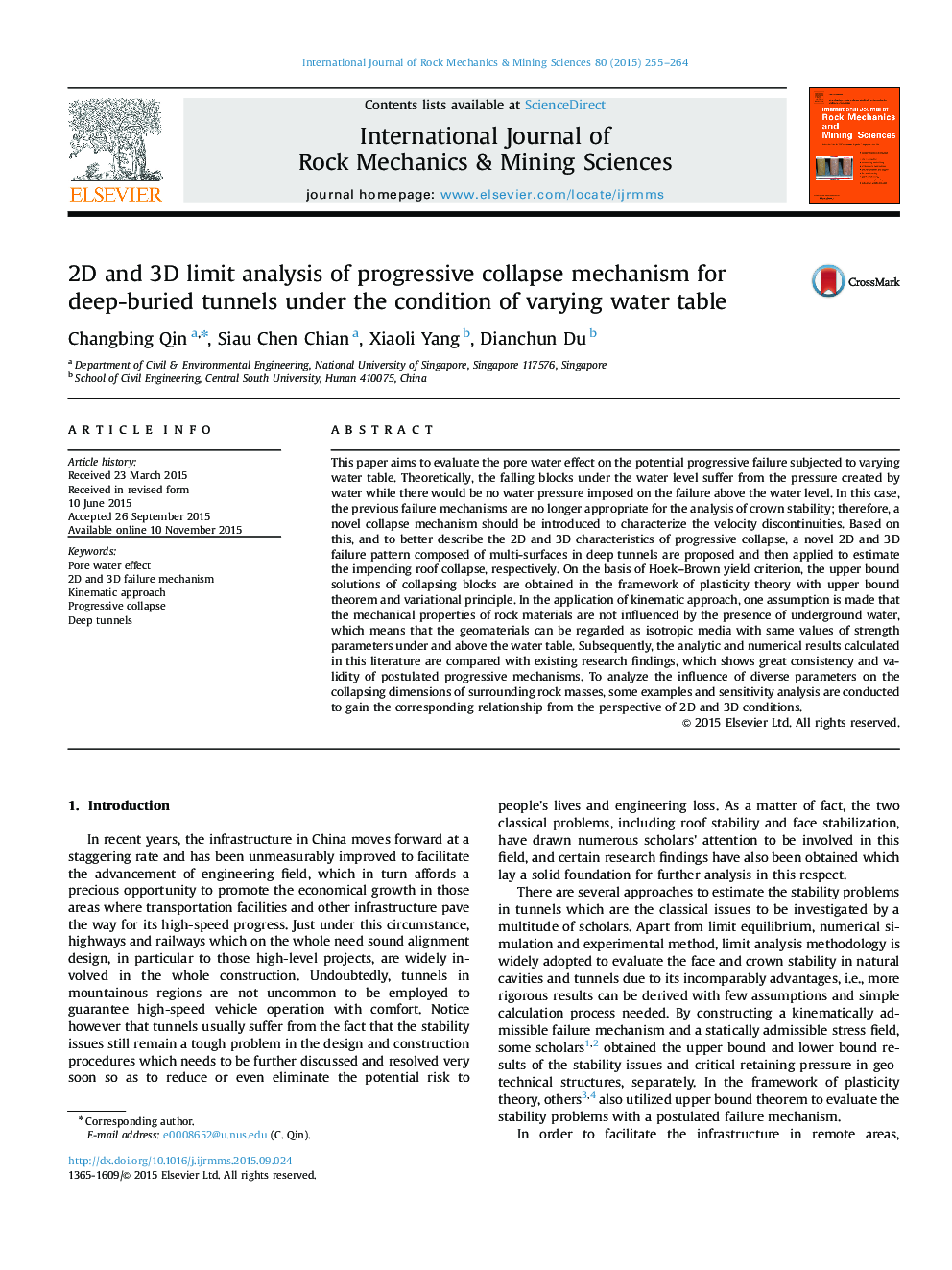| Article ID | Journal | Published Year | Pages | File Type |
|---|---|---|---|---|
| 809031 | International Journal of Rock Mechanics and Mining Sciences | 2015 | 10 Pages |
•We propose 2D and 3D progressive failure mechanisms for deep tunnel roofs under varying water table.•Variational principle and stepwise refinement are adopted to derive the upper bound solutions.•Parametric studies are performed for specific cases of square and circular tunnels.•The results indicate that the pore water effect makes the progressive collapse possible.
This paper aims to evaluate the pore water effect on the potential progressive failure subjected to varying water table. Theoretically, the falling blocks under the water level suffer from the pressure created by water while there would be no water pressure imposed on the failure above the water level. In this case, the previous failure mechanisms are no longer appropriate for the analysis of crown stability; therefore, a novel collapse mechanism should be introduced to characterize the velocity discontinuities. Based on this, and to better describe the 2D and 3D characteristics of progressive collapse, a novel 2D and 3D failure pattern composed of multi-surfaces in deep tunnels are proposed and then applied to estimate the impending roof collapse, respectively. On the basis of Hoek–Brown yield criterion, the upper bound solutions of collapsing blocks are obtained in the framework of plasticity theory with upper bound theorem and variational principle. In the application of kinematic approach, one assumption is made that the mechanical properties of rock materials are not influenced by the presence of underground water, which means that the geomaterials can be regarded as isotropic media with same values of strength parameters under and above the water table. Subsequently, the analytic and numerical results calculated in this literature are compared with existing research findings, which shows great consistency and validity of postulated progressive mechanisms. To analyze the influence of diverse parameters on the collapsing dimensions of surrounding rock masses, some examples and sensitivity analysis are conducted to gain the corresponding relationship from the perspective of 2D and 3D conditions.
